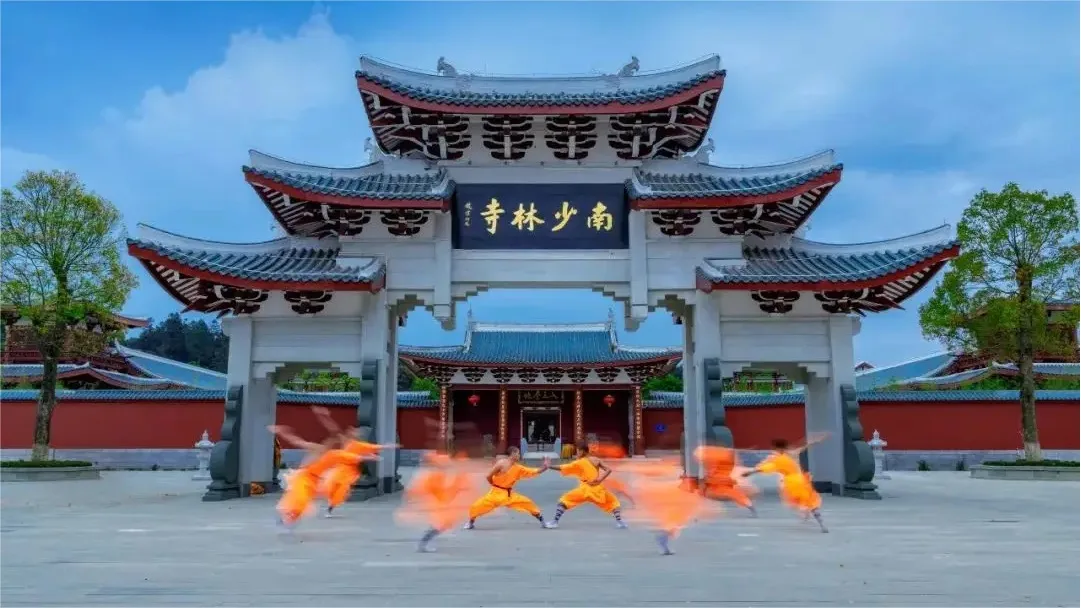Southern Shaolin Temple (南少林寺), originally known as “Linquan Monastery (林泉院),” is located in Putian City, Fujian Province. Its history dates back to the first year of Yongding during the Southern Dynasty (557 AD). Legend has it that thirteen warrior monks from the Shaolin Temple in Mount Song, Henan Province, aided Emperor Taizong of the Tang Dynasty in unifying China. In recognition of their service, Emperor Taizong permitted the establishment of ten branch temples across the country, including one in Fujian.
Today, the site of Southern Shaolin Temple in Fujian Province preserves only a few affiliated temples such as Zifu Temple and Honghua Pavilion. These remnants serve as reminders of the temple’s rich history and its significant cultural and martial legacy in Southern China.
Table of Contents
- Basic Information
- Location and Transportation
- Highlights of Southern Shaolin Temple
- History of Southern Shaolin Temple
Basic Information
| Estimated Length of Tour | 2 hours |
| Ticket Price | Free |
| Opening Hours | 9.00 – 17.00 |
| Telephone Number | 0086-0595-22795119 |
Location and Transportation
Southern Shaolin Temple is situated in Lishan Village, Jiu Lian Mountain, Xitianwei Town, Licheng District, Putian City, Fujian Province, China. It is approximately 17 kilometers away from the city center of Putian. The most convenient way to reach the temple is by driving, although public transportation options are available. From Putian Long-distance Bus Station, take bus route 23 to Xitianwei Town, then transfer to another bus to Southern Shaolin Temple.
Highlights of Southern Shaolin Temple
Kalan Bodhisattva (紧那罗王)

One of the most distinctive features of the Southern Shaolin Temple is the statue of Kalan Bodhisattva. Unlike the traditional representations of deities, this statue depicts Kalan Bodhisattva as a figure with a bare chest and feet, holding a firewood stick. According to the Henan Fu Zhi historical record, in the early 14th century, a humble monk known for his kitchen duties was revealed to be Kalan Bodhisattva in disguise. During a siege by the Red Turban Army in 1350, this monk emerged from the temple with a firewood stick, growing to an immense height and declaring himself as Kalan Bodhisattva. The Red Turban Army, frightened by this miraculous event, fled, thus saving the temple. In honor of this hero, a statue of Kalan Bodhisattva was erected, and he was made the guardian deity of the temple. This unique figure represents the temple’s dedication to protecting Buddhist teachings and is a symbol of faith and devotion.
Zifu Temple (资福寺)

Zifu Temple, built in 1646, is another significant site related to the Southern Shaolin Temple. After the original Southern Shaolin Temple was destroyed by the Qing forces, several monks managed to escape and establish Zifu Temple as a place of refuge and spiritual continuity. It was here that the monks continued to uphold the Southern Shaolin traditions and maintained their mission of peace and righteousness. The temple is constructed in the traditional Chinese architectural style, featuring a main hall flanked by courtyards and a serene environment for meditation and worship. The temple’s architecture and historical significance reflect the resilience and enduring spirit of the Southern Shaolin monks.
Honghua Pavilion (红花亭)

Located west of the Southern Shaolin Temple, Honghua Pavilion is another prominent historical site. Built in 1646 by Zheng Jia and Lu Qi, this pavilion served as a gathering place for members of the Heaven and Earth Society, a secret society fighting against the Qing Dynasty. The pavilion is named for the red flowers that adorned its surroundings, symbolizing the dedication and sacrifice of those who fought for the restoration of the Ming Dynasty. Inside, there are shrines dedicated to historical figures like Zheng Chenggong, a hero of the anti-Qing resistance, and the pavilion’s design and decorations reflect the patriotic fervor and revolutionary spirit of the era.
Martial Arts Legacy

Southern Shaolin Temple is famous for its martial arts heritage, particularly for developing Southern Shaolin Kung Fu, also known as Nanquan (Southern Fist). This martial art form emphasizes close-combat techniques, intricate hand movements, and powerful stances. It contrasts with the Northern Shaolin style, which is known for its leg techniques. Visitors to the temple can explore the history of this martial tradition and witness demonstrations of traditional Southern Shaolin Kung Fu, including various forms of hand-to-hand combat, weapon techniques, and traditional training routines.
History of Southern Shaolin Temple
During Tang Dynasty, five hundred warrior monks, led by three of the thirteen monks – Dao Guang, Seng Man, and Seng Guang, were dispatched to Fujian to suppress piracy and promote Buddhism. Their efforts brought peace and prosperity to the region, earning the gratitude of the local people who urged them to stay. Thus, they chose to settle at Linquan Monastery, which later became known as Southern Shaolin Temple.
During the Northern Song Dynasty, the temple flourished with over five hundred monks and became renowned for its martial prowess and vast size, covering approximately thirty thousand square meters. The Southern Shaolin martial arts, known as Nanquan (Southern Fist), developed alongside the leg techniques of the Northern Shaolin (Beitui), collectively known as “Beitui Nanquan.”
In the Southern Song Dynasty, the temple continued to prosper. However, during the early Qing Dynasty, due to its involvement in anti-Qing movements and connections with secret societies like the Heaven and Earth Society, Southern Shaolin Temple faced persecution. It was eventually destroyed by Qing forces, leading to its disappearance from historical records.


